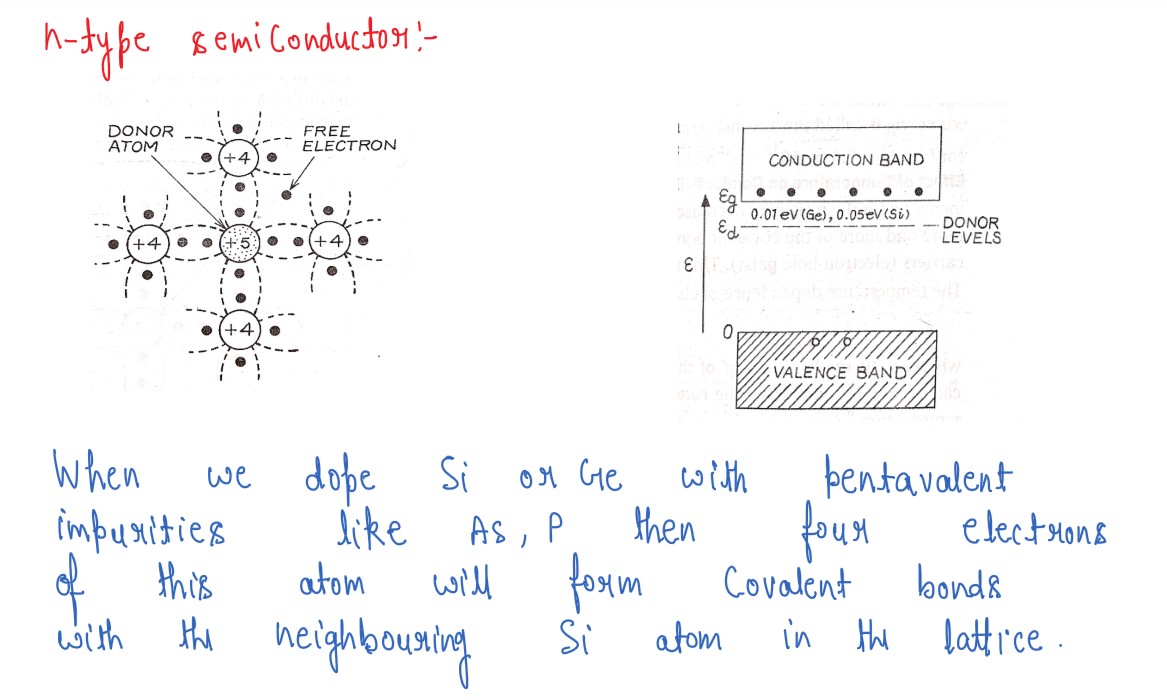Q1
Draw separate energy-level bands for conductors, semiconductors and insulators and label each of them to
illustrate the behaviour of (i) a conductor, (ii) a pure semiconductor and (iii) an insulator.
Solution


Q2
Explain formation of energy bands in solids. Distinguish between conductors (metals), insulators and
semiconductors on the basis of their energy band diagrams.
Solution





Q3
Draw a labelled energy band diagram for a solid which is an insulator. What is the main difference
between this diagram and that of a semiconductor?
Solution

Q4
What is meant by doping in semiconductors? What
are p-type semiconductors?
Solution

Q5
Explain, how an intrinsic semiconductor can be converted into (i) n-type, (ii)
p-type semiconductor.Given one example of each and draw their energy
band diagrams.
Solution





Q6
What do semiconductors? Distinguish between them on the basis of energy band diagram.
Solution




Q7
How are energy bands in solids formed? Explain, by drawing energy band diagrams, conduction in n-type
and p-type semiconductors.
Solution


Q8
Distinguish between intrinsic and extrinsic semiconductors.
Solution


Q9
Distinguish between p-type and n-type semiconductors.
Solution

Q10
Explain briefly what what is meant by extrinsic semiconductors, including the terms donor and acceptor
impurities as well as p-type and n-type semiconductors.
Solution





Q11
Using the concept of electron and hole currents, derive expression for the conductivity of
a semiconductor.
Solution


